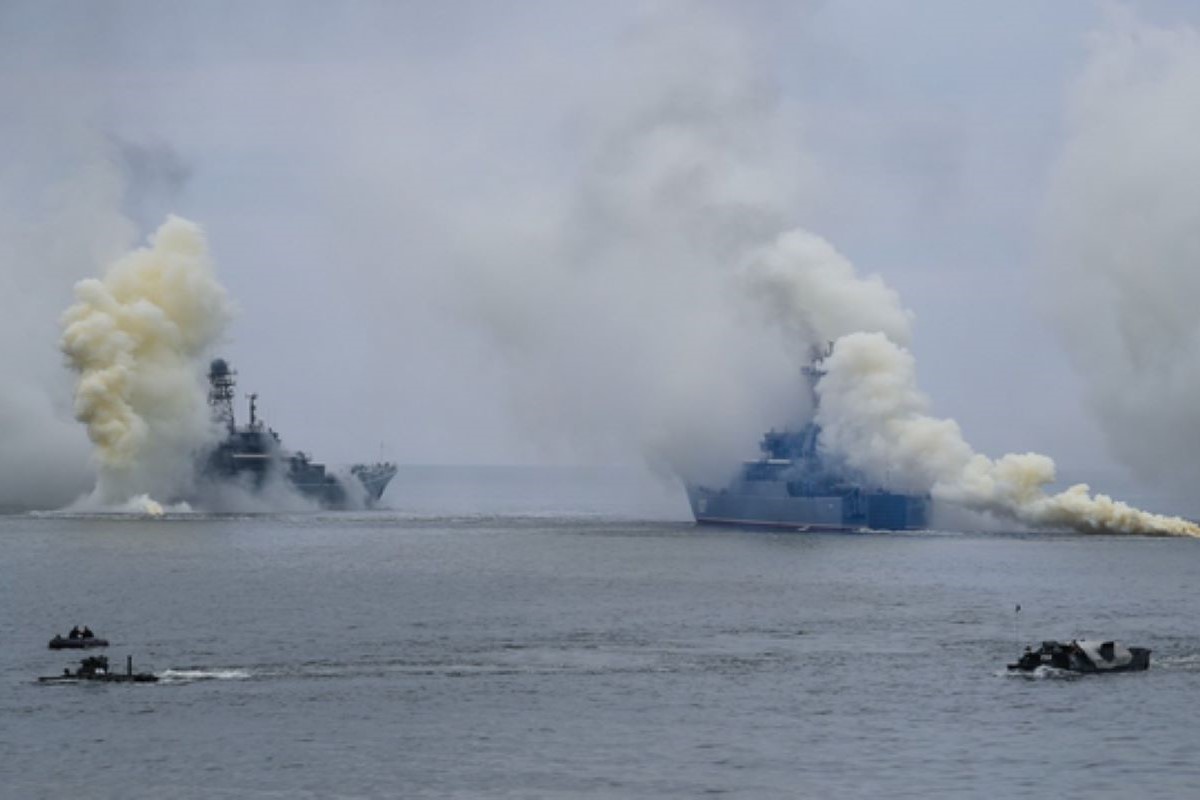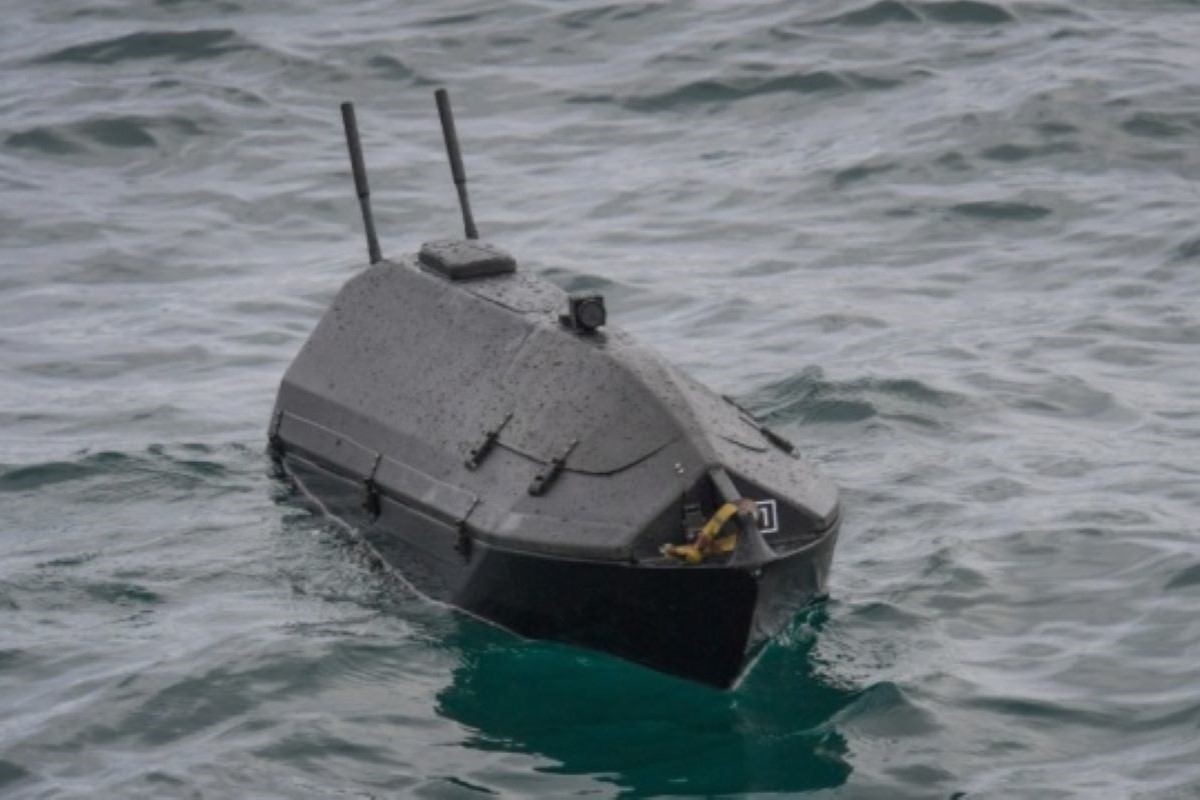The Black Sea Report (5): The situation in the Black Sea as of April 2024 and ways to improve the AFU performance

The Monitoring Group of the Black Sea Institute of Strategic Studies and BlackSeaNews continues the publication of the analytical report: Situation in the Black Sea Over the Course of Russian Aggression Against Ukraine.
The situation in the Black Sea as of April 2024 and ways to improve the AFU performance
It’s worth remembering that despite the losses, the Russian Federation maintains a fairly powerful grouping in the Black Sea theater of operations — both in the Black and Azov Sea — consisting of ships, boats and submarines, as well as the aviation and land components.
While one should not assume that Russians have abandoned their plans to seize the southern parts of Odesa region, it is quite clear that a classic amphibious assault operation is no longer possible, as Russia is unable to compensate the loss of most of its amphibious assault ships, either now or in the near future.
In addition, the fleet damage has also caused problems with the troops logistics, since previously amphibious assault ships of the 775/775M and 1171 projects played a critical role in the transportation of weapons, ammunition and personnel.

As a result of the AFU sea drone activity, the BSFRF has been forced to:
-
significantly reduce its presence in the northwestern regions of the Black Sea
-
redeploy its most valuable ships to the Black Sea coast of Krasnodar Krai
-
build a new Ochamchire base in the occupied territory of Abkhazia (Georgia).
In turn, the redeployment of the ships to safer bases forced the Russians to designate new, more remote areas for launching missiles at Ukraine, giving Ukraine's air defense more time to react.
Meanwhile, the possibility of being attacked at any time virtually throughout the Black Sea has strongly impacted the morale of Russian servicemen.
Ultimately, it was the significant losses of personnel and ships that led to the resignation of the Commander of the Black Sea Fleet, Admiral Viktor Sokolov, on February 15, 2024.
Thus, the new realities that the Russian Navy was not prepared for, require now a different tactics, including countering small-size strike weapons such as maritime drones.
However, true to its Soviet legacy, all the available combat potential of the Russian Federation, was built for major ship battles and activities countering enemy navigation routes.
But in the absence of Ukraine's own fleet, when the enemy is not at sea, its strike forces are difficult to detect with the available means, ground targets are very mobile and any attempt to approach the enemy's coast does not guarantee a return to the “home haven," while BSFRF combat strength has decreased by almost 30 percent, Russian sailors have legitimate reasons for outrage.
Therefore, the Russians are now urgently creating an effective system for neutralizing the naval threats, including countering small strike forces, that would likely include:
-
new tactics of using ships and boats to counter threats
-
adaptation of existing, including outdated Soviet-style, weapons systems — strike, electronic warfare, intelligence and so on — to the requirements of today
-
creation/improvement of the existing radio and radio-electronic intelligence system, and the surface situation coverage system
-
facilitation of interaction between the fleet’s aviation, maritime and land components for neutralizing naval threats
-
development and implementation of similar strike weapons that could be used against Ukrainian drones.
Until the above is successfully accomplished, Russia will not feel confident in the Black Sea.
Tasks facing the Armed Forces of Ukraine
In addition to returning to the internationally recognized borders of 1991, Ukraine's strategic goal in this war should be to inflict such a defeat on Russia in terms of material, technical, human and other resources, that would guarantee its inability to resume aggression.
However, in order to fulfill this strategic goal, Ukraine has to first reach a number of other objectives, where control over the northwestern part of the Black Sea, the coast of the TOT of the ARC and Russian maritime routes in the Black Sea plays a pivotal role.
First of all, enemy’s multiple vulnerable and extremely sensitive petroleum and agricultural product transportation routes, including from the occupied territories of Ukraine, run through the Black Sea. Cutting those, including with the help of unmanned carriers, will have a powerful impact on the Russian economy, reducing Russia's ability to wage war.
In addition, we should work with partner countries to prevent free navigation of Russian "paramilitary" vessels that under a neutral civilian flag carry military cargo or enter the closed TOT of the ARC ports.
As experience shows, the use of large ships in the Black Sea theater of operations is currently a futile endeavor. Moreover, for obvious reasons, Ukraine is now unable to build large ships.
Instead, we would be much better served by launching a Ukrainian production of a multitude of small missile carriers, including unmanned ones, and we have every opportunity to do so.
Ukraine also needs to strengthen and improve its system of surface surveillance and further develop synergy of the reconnaissance and strike, electronic warfare and small surface/air unmanned strike means, combined with missile weapons.
Unfortunately, Ukraine still lacks effective means of detecting and countering the Russian Kalibr missile submarines, so their active operations against Ukraine are limited only by the sea depths around the Ukrainian coast. Clearly, that issue requires a prompt resolution.
Ukraine sea drone advantage notwithstanding, we need to keep in mind that the emergence of Russian analogues is a matter of very short time, so we should already be working on countermeasures and development and application of underwater/semisubmerged unmanned carriers, especially since those are already in service in partner countries. Needless to say, the USV other usages, such as booby-trapping, reconnaissance, relaying control commands, electronic warfare, air defense, etc., should be also explored and promptly put into action.
Only the swift development and implementation of the cuttingedge technologies, that Russia, a country with a large scientific, technical, and material potential, is not yet ready for, will ensure the victory.
* * *
Read previous parts of the report Situation in the Black Sea Over the Course of Russian Aggression Against Ukraine:
- The database of Russian warships, boats and vessels destroyed or damaged by the Ukrainian Defense Forces since February 2022
- Composition of the Warring Parties' Forces and Russian Black Sea Fleet Objectives at the Opening Stage of Aggression
- The main tasks of the Black Sea Fleet as of February 24, 2022
- Summary of the 2022-2024 Developments in the Black Sea Theater of Operations
* * *
More on the topic
- 24.06.2024 The Black Sea Report (Part 1 NEW). Losses of the Russian Navy in the Black Sea in 2022-2024. Updated database
- 14.06.2024 The Black Sea Report (4): Summary of the 2022-2024 Developments in the Black Sea Theater of Operations
- 11.06.2024 The Black Sea Report (3): The main tasks of the Black Sea Fleet as of February 24, 2022
- 10.06.2024 The Black Sea Report (2). Composition of the Warring Parties' Forces and Russian Black Sea Fleet Objectives at the Opening Stage of Aggression
- 11.05.2024 The Black Sea Report (Part 1). Situation in the Black Sea During the Russian Aggression Against Ukraine in 2022-2024.
- 26.02.2020 Closure of the Black Sea on February 25, 2020
- 25.02.2020 Closure of the Black Sea on February 23, 2020
- 18.02.2020 Closure of the Black Sea on February 17, 2020
- 02.02.2020 Closure of the Black Sea on February 1, 2020
- 03.01.2020 Closure of the Black Sea on January 2, 2020
- 01.01.2020 Closure of the Black Sea on the last day of 2019
- 10.09.2014 All Russian Black Sea Fleet assault ships return to the Black Sea by September 7 - details
